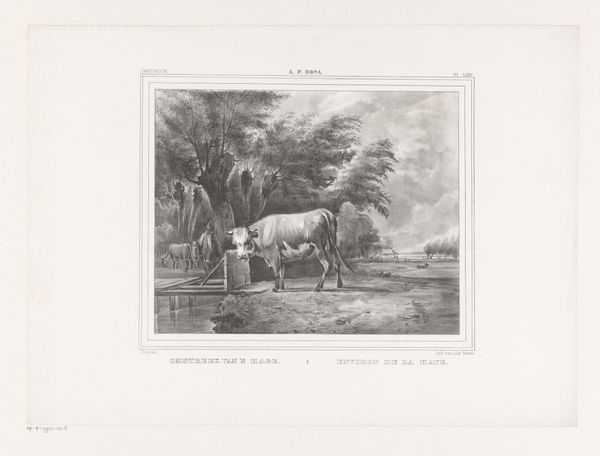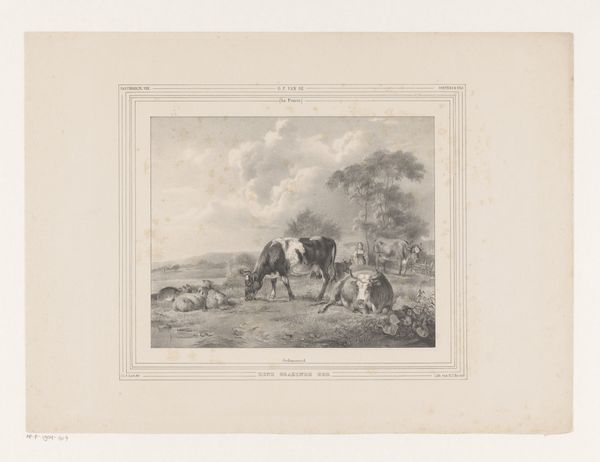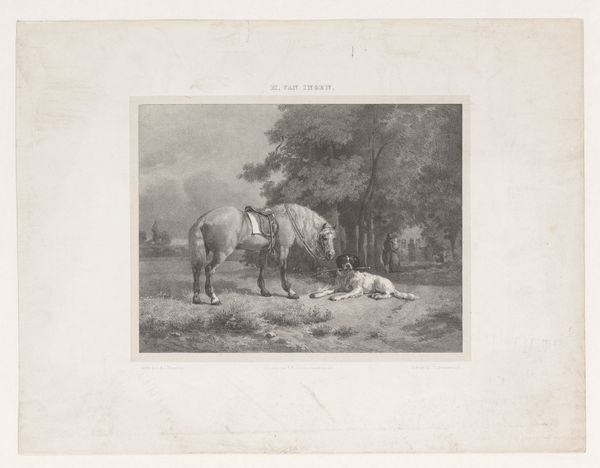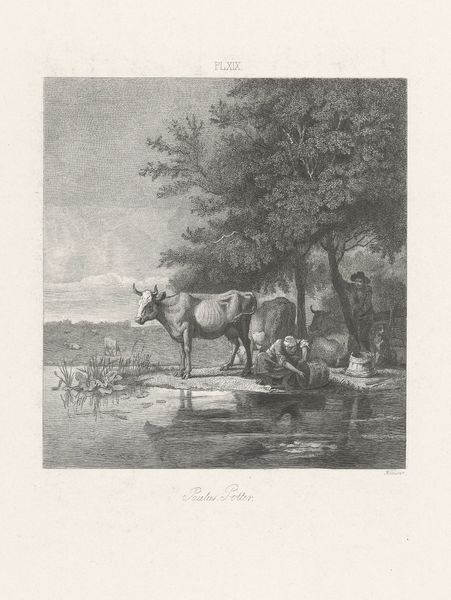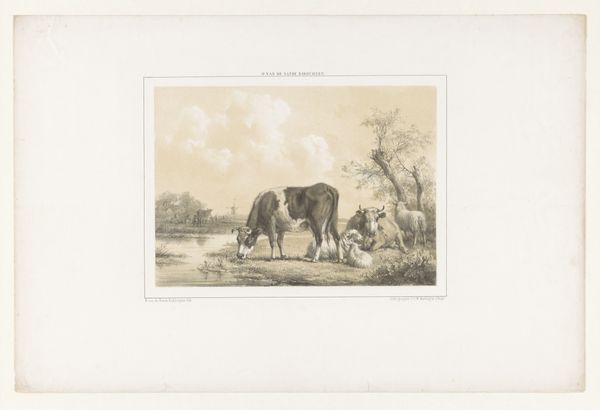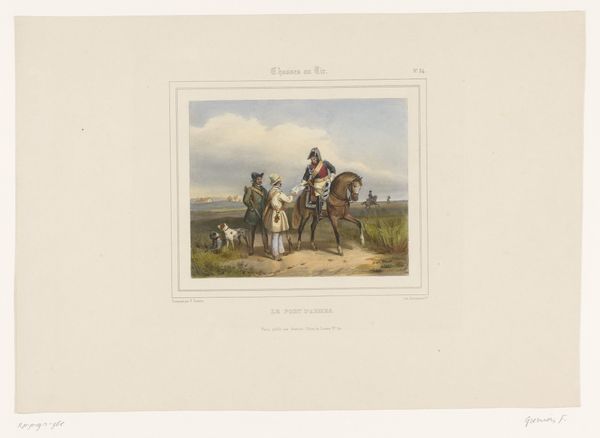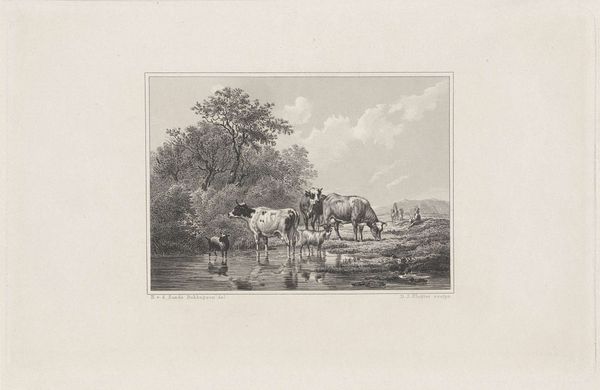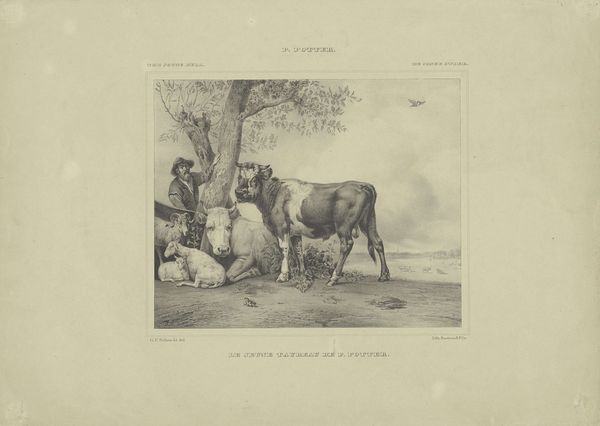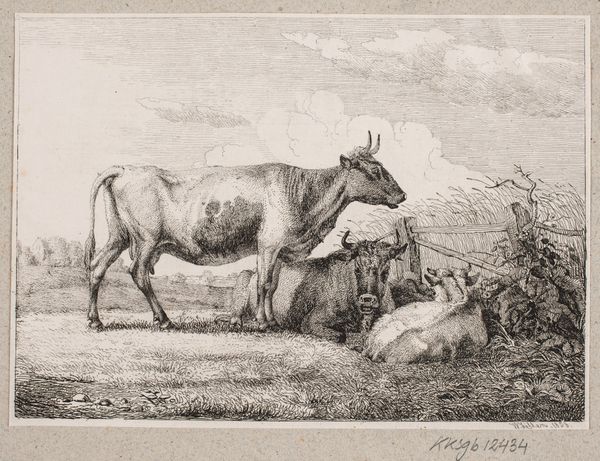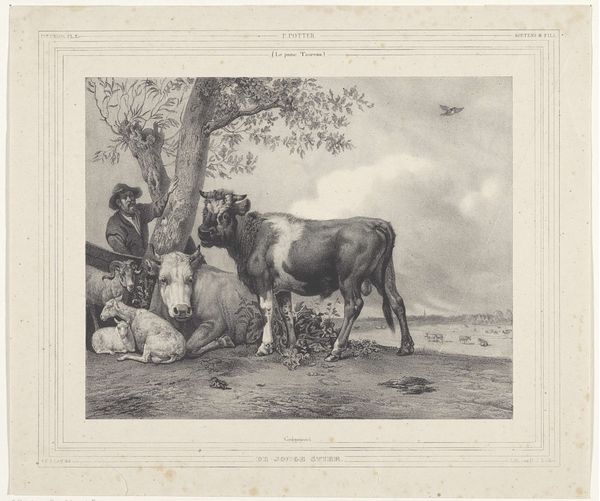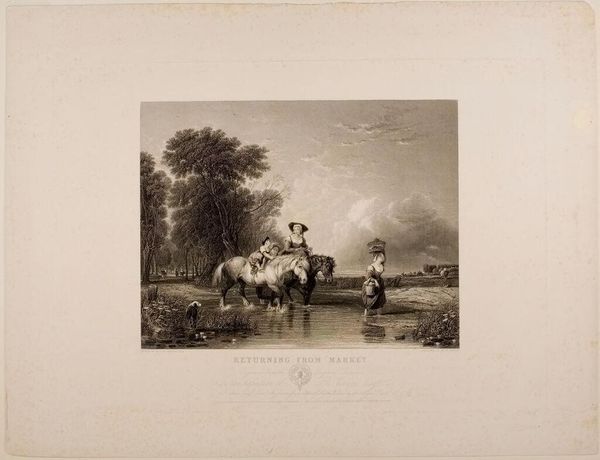
lithograph, print
#
16_19th-century
#
lithograph
# print
#
landscape
#
genre-painting
#
realism
Dimensions: 286 mm (height) x 397 mm (width) (billedmaal)
Curator: This lithograph from the 1880s is titled "An Eel Cart by a Brickworks in Jutland" by Adolph Kittendorff. Editor: It strikes me as a stark but honest scene, a visual testament to labor and the relationship between humans, animals, and the land. Curator: Absolutely. Kittendorff masterfully captures the setting and the everyday toil involved in brick production. Note the ox pulling the cart filled with what one presumes are eels—a common form of sustenance and trade. Editor: The artist's rendering of light and shadow lends the piece an atmospheric quality. The stark contrast emphasizes the ruggedness of the thatch roof of the house, and its material decay from the roof of the house to the cracked surface where the dog rests and where the cart wheels dig in. How does the social environment influence such detailed composition and narrative? Curator: The labor involved in printmaking, specifically lithography, connects intrinsically with the represented labor of the rural workers depicted. The bricks signify the fruits of the brickworkers' industry and construction, while the eel harvest speaks of commerce and diet, and also a particular kind of environment being altered into product. It invites questions about the relationship between urbanization and agriculture in 19th-century Denmark. Editor: You’re right to spotlight the work involved. Still, I see this primarily as a study in composition. Notice how the lines converge, drawing the eye from the dark foreground to the lighter background? How form interacts with tone generates the spatial organization, as well. Curator: Yes, the formal elements work to support a narrative about labor and economy. Observe the ox itself – its musculature speaks volumes about its working life. Its treatment as a work object, in contrast with the seemingly complacent workers relaxing atop the wagon is telling, even though one might interpret this as "rest". What does it produce about work being portrayed, in light of animals' labor? Editor: You present interesting parallels. Perhaps, though, the stillness adds to a quiet reflection. Overall, Kittendorff invites close inspection of line and the weight it can hold. Curator: Indeed. This artwork offers much to think about regarding art, the natural world, and human intervention.
Comments
No comments
Be the first to comment and join the conversation on the ultimate creative platform.
